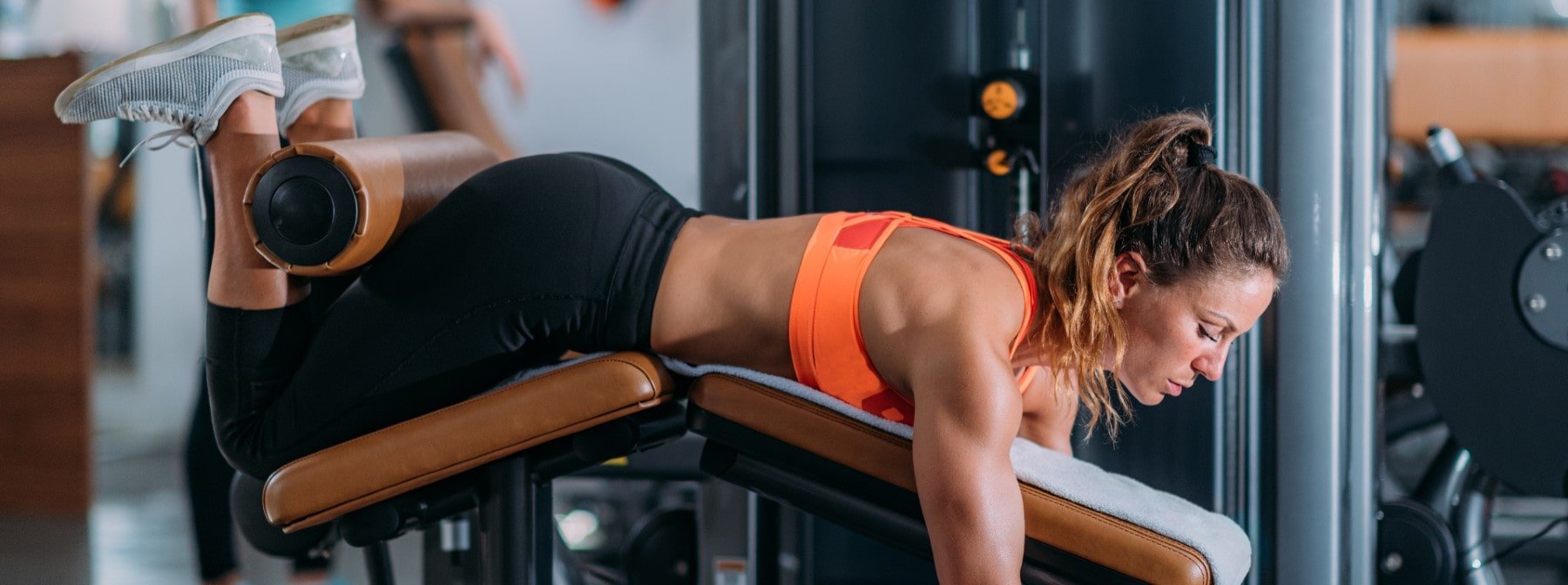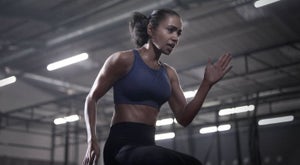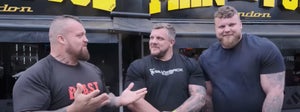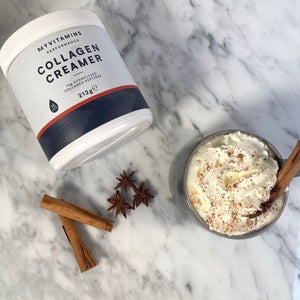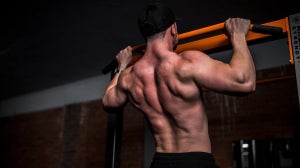The lying leg curl (otherwise known as the hamstring curl) is one of the most effective isolation exercises for the hamstrings. If you are looking to add some strength and mass to your hamstrings, then this should be one of your go-to accessory exercises when training the posterior chain.
Jump to:
How to perform the lying leg curl:
- Adjust the shin pad so that it makes contact with your Achilles Tendon, just below the calves and above the ankle joint. Lie prone on the machine and hold onto the handles to secure your upper body.
- Once in position, flex only at the knee so that your heel is pulled back towards your glutes. Contract as far as you can go (likely to be once you meet soft tissue opposition with the pad meeting your hamstrings/glutes).
- Slowly lower back to the starting position under control before initiating the following rep.
Lying Leg Curl Benefits
Uses multiple muscle groups
The lying leg curl primarily activates the hamstrings, which comprise of the Biceps Femoris (long and short head), Semitendinosus and Semimembranosus. Since the Gastrocnemius (one of the main calf muscles) is bi-articular, meaning it crosses two joints - the ankle and the knee joint, it also plays a role in the knee flexion involved in the lying leg curl. With appropriate technical execution of this exercise, and the implementation of progressive overload (increasing volume load etc. incrementally across a number of training sessions), this exercise effectively trains a broad range of muscles in the posterior of your leg, leading to some very favourable training adaptations, such as strength, endurance and size.
It's ideal for developing strength and hypertrophy
With proper execution, focusing on controlling the movement and contracting your hamstrings hard during the concentric phase, this exercise can elicit a great deal of strength and size adaptations for the posterior chain. If you’re a powerlifter looking to increase your deadlift or a bodybuilder trying to build some bigger hamstrings, this exercise should be one of the staple exercises in your repertoire for the hamstrings.
It can help to address muscular imbalances
If you partake in a sport like weightlifting or if you enjoy movements such as squats, then you may have more developed quadriceps relative to your hamstrings. This can lead to injuries or other pathologies that may cause pain. Using the leg curl can help to specifically develop the strength and work capacity of the hamstrings, helping to balance out the strength ratio between the posterior and anterior chain.
It’s ideal when managing injuries
If you are dealing with an injury that limits your ability to perform other exercises, such as lower back pain that is affecting your ability to perform a deadlift, then this exercise is the perfect solution to ensure your hamstrings still receive significant training stimuli. This can help to mitigate any muscle loss that may occur during cessation of large compounds such as deadlifts. Additionally, the leg curl can offer a safe and controlled method of loading the hamstrings during the later stages of rehabilitation from a hamstring strain.
It can contribute to athletic development
Many sports rely on the ability of the lower limb to produce muscular power, in which the hamstrings play a pivotal role, as they produce a lot of power for knee flexion and hip extension - both important when running. Training the hamstrings with an isolation exercise such as the leg curl can help to ensure the hamstrings receive the necessary stimuli to adapt and thus support other aspects of athleticism, including the execution of sports specific movements.
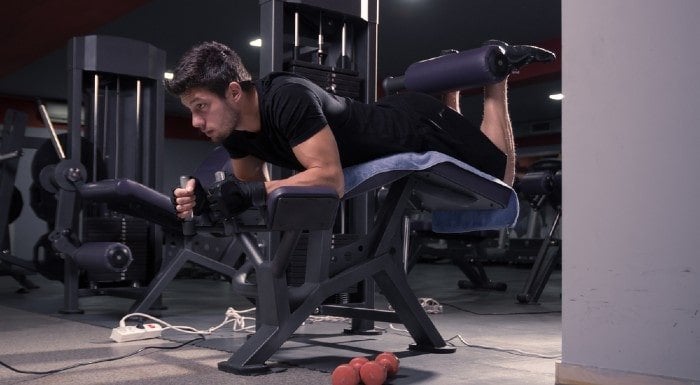
Other Variations of Leg Curls
Whether you’re working around an injury or seeking out other methods to progressively overload this movement, there are plenty of variations to choose from to facilitate the training adaptations that you desire.
Standing Leg Curl
This is essentially the same as the lying leg curl, although there is slightly less hip flexion involved - meaning the hamstrings are worked in a slightly different range of movement. This exercise is also performed unilaterally, as the opposite leg supports you to stay standing.
- Set the pad height to be in contact with your achilles tendon on the working leg.
- Use the non-working leg to support yourself while you flex the heel of the working leg up towards your glutes.
- Squeeze the hamstrings at the top before returning to the start position in a controlled manner.
Standing Leg Curl With Resistance Band
This is performed in the same way as the standing leg curl, but you can perform this variation anywhere you can take a resistance band!
- Stand facing the anchor point for the resistance band - this can be something like a squat rack or even just a table etc. Anchor the resistance band to an object that won’t move, then step into the resistance band loop with the working leg only.
- Step slightly away from the anchor point until the band is slightly taught, with the contact point again on your Achilles Tendon area.
- Flex your heel up towards your glutes (you may only be able to make it to 90-degrees before the band slips) before returning to the start position in a controlled manner prior to the next rep.
Prone Leg Curl With Resistance Band
When performing the standing version of this, you will likely be unable to effectively load the end range (closest to the glutes) of this exercise. The prone lying variation helps to bridge that gap.
- Anchor the resistance band to an anchor point, then loop the ankle of the working leg through it.
- Lying prone on the floor, flex your knee to around 90-degrees - the resistance band should be slightly taught in this starting position.
- Flex your knee to bring your heel to your glutes, before returning to the starting position in a controlled manner, then initiate the following rep.
Seated Leg Curl
This variation will place the greatest stretch on the hamstrings in the starting position, as the hip is flexed to around 90-degrees or more with the knee fully extended. It would definitely be beneficial to use this variation along with the lying leg curl, as they load the hamstrings at different lengths.
- Sit in the machine, with the thigh pad in contact with your quads, just above the knee. Ensure the shin pad is adjusted to be in contact with the achilles tendon.
- Flex your heel towards your glutes before returning to the starting position in a controlled manner, then initiate the following rep.
Nordic Hamstring Curl
This variation relies on overloading the eccentric portion of the leg curl, which research has shown increases strength and fascicle length - two key factors that protect the hamstrings from injury during high eccentric loading (such as sprinting).
- Start in a kneeling position - you will need something soft to put your knees on, such as a folded up yoga mat. You will also need an anchor point - ideally a friend who is heavy enough to offset your weight (they will need to hold your ankles down). Before initiating the rep, ensure your hips are also in a neutral/extended position.
- Maintaining a rigid torso and a straight line from the shoulder to the knee, slowly lower your torso towards the floor in front of you, using your hamstrings as ‘brakes’. Do this as far as you can before your hamstrings give way (and make sure to break the fall with your arms out ahead like a push up!).
- You can either powerfully push yourself up to the start position using your arms, or use your hamstrings to perform the concentric portion (chances are, if you are able to do that then you’ve probably done this a thousand times before and have no reason to read this guide!). You’ll now be back in the starting position ready for the next rep.
Common Mistakes and How to Fix Them
Using Inappropriate Loads
Using loads that are too heavy can result in you performing the exercise with incorrect technique to grind the rep out and get the load up, while using loads that are too light will not elicit sufficient training stimuli that result in positive training adaptations. With the correct load, you will be able to perform every rep with the correct technique, but you should fail (i.e. be physically unable to contract the muscle) within the desired rep range.
Leg Pad Placement is Incorrect
Incorrect pad placement can lead to the exercise being performed less effectively, as range of movement can also be limited, thus restricting the range of movement through which the muscle is loaded.
Rushing Reps
Rushing the eccentric phase of a repetition mitigates the time under tension, a driving factor for hypertrophy. Subsequently, this will limit the amount of training adaptations made, so ensuring you control the full rep is essential when you’re trying to make the desired training adaptations.
Take home message
The lying leg curl provides a great exercise for directly stimulating the hamstrings, which can ultimately contribute to a more rounded physique and enhanced athleticism. You should consider this exercise to be an essential accessory when training your legs in the future!
Enjoy this article?
READ MORE HERE:
